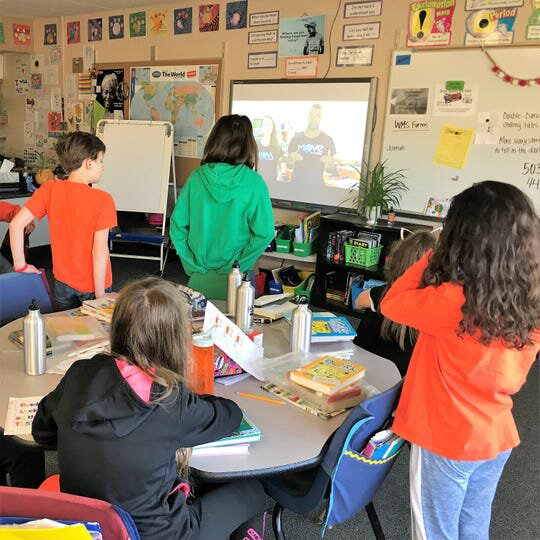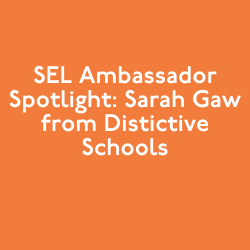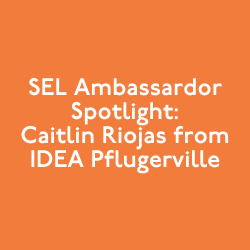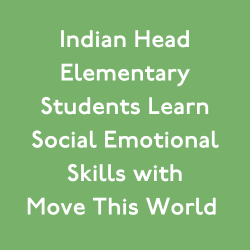When Lindsey Olson walks the halls of Cleveland Elementary or talks one-on-one with a student, she can’t help but smile with pride when she sees one of her children take a deep breath and pretend to step into someone else’s shoes.
And she can’t help but smile, when she watches them look at posters depicting the “emotional ABC’s” and “10 Emogers” with little symbols usually used to react to something on social media or sent in a quick text.
It’s how she knows a new mental health program centered around teaching children emojis is working, she said.
Throughout this school year, Cleveland Elementary and a few other elementary campuses across the Sioux Falls School District are using Move This World for the first time. It’s a social and emotional well-being program that uses daily movement and dance activities, along with emojis to help kindergarten through fifth grade students better understand how they’re feeling from day to day.
The program is also helping teachers like Olson better identify which children might need a bit of extra support, Principal Mitchell Sheaffer said.
“All of our teachers are great at identifying and reading kids when they come in through the door in the morning, but this might kind of take them to that next level to see where they’re at,” he said.

Built for 21st-century learning, Move This World offers online curriculum and videos focused on classroom management, bullying prevention, stress management, conflict resolution, empathy, resilience and more, according to the program’s website.
“It could be done at the beginning of the day,” Sheaffer said. “Some might do it, say, after the come back from lunch and recess, or if the kids are energized and need some focus for the next part of learning for the day, too.”
Students also have a list of about 100 emotions, or emojis, they can reference throughout the day. And those “emoger” — physical gestures or actions students can use to cope with emotions — posters also give students a chance to practice as cool-down mechanisms or positive coping skills when those emotions run high, she said.
“Sometimes, it’s take a breath, or take a drink of water,” she said. “It’s just different things they can do. It’s not necessarily the happy, sad or angry — those are the emotions they refer to, but the emogers help us learn how to handle the emotions we’re feeling.”
In early May, Olson’s class visited a middle school campus for the first time, right in the middle of working on impulse control gauging emotional levels with Move This World.
Because middle school can come with new levels of anxiety and unknowns about their futures, Sheaffer’s hoping the program will help give his older students a sense of security and support.
“This has definitely helped them name their social skills, but now they know what to do with that emotion,” Olson said. “They’ve been given a right to feel that emotion, whether it’s happy or tired, angry or upset.”
And when her students can realize which emotion is affecting them the most, they can then realize which behavioral skill goes out of the window at the same time, like if a student feels angry it may be difficult for them to accept a consequence, she said.
For example, in one of the exercise videos, speakers ask the children to express their excitement level with different smiles and grins. In another, which requires children to clap at each other around the classroom, using the words and a pattern of “zip,” “zap” and “zop,” speakers encourage children to celebrate their mistakes instead of looking down on themselves.
“Now as a class, we’re not only able to celebrate successes with each other, but push each other through some of those difficult times we have,” Olson said. “If a student is struggling with something, nine times out of 10 another one of my students will step in and help them, talk them down off a ledge or help them figure out their emotions a little bit better.”
And when a child sees one of their peers making a positive choice for the first time, instead of a negative, reactionary choice to their emotions, her students celebrate that moment, she said.
“There are definitely highlights throughout the building on our growth of students identifying how they’re feeling, being aware of their feelings,” Sheaffer said. “I’ve seen students who have struggled in the past who have had a more successful year this year because they’re a little more regulated and able to identify which emotion they’re feeling, and then how to respond.”
This article was originally posted on Argus Leader on June 3rd, 2019.
Sign up for Move This World’s newsletter to stay up to date on social emotional learning.
Enter your email below










